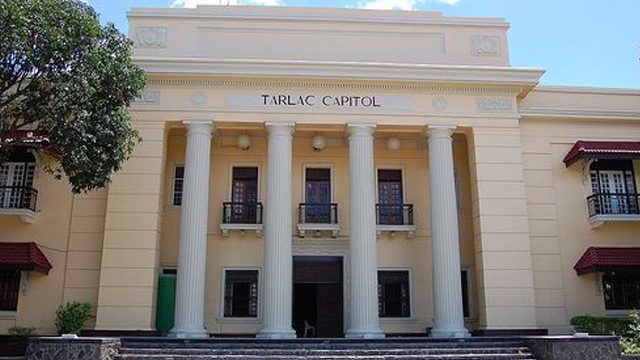SUMMARY
This is AI generated summarization, which may have errors. For context, always refer to the full article.

MANILA, Philippines – The Commission on Audit noted red flags on two 2018 disaster projects of the Tarlac provincial government and asked them immediately remedy these questionable spendings.
Cited by COA were the Tarlac government’s P37.95 million use of its Local Disaster Risk Reduction and Management Fund (LDRRMF). COA said one project lacked supporting documents, the other was for the improper use of the funds.
COA’s 2018 audit report, released online last week, said it could not verify the P33,909,810 purchase of trauma and first kits charged to the disaster funds. The government auditors noted that the documents submitted by the Tarlac officials did not include the names of the beneficiaries of these kits.
COA also called out the construction of two multi-purpose buildings charged to the Tarlac’s disaster fund amounting to P4.042 million. The auditors said the so-called buildings looked more like mere offices.
In October 2018, Tarlac acquired 1,022 sets of “trauma bags,” which were supposed to include medical, dental, and laboratory supplies worth P19,980 each. The total cost of the trauma bags was P20.42 million.
These trauma bags are to be distributed among barangay health workers for use during emergency response operations.
Tarlac also purchased 15,000 “basic survival and first aid kits“ at P899.35 each for a total of P13.49 million. The first aid kits were intended for residents of pre-identified disaster-prone municipalities and barangays.
The kits contained toothbrush, toothpaste, soap, rubbing alcohol, blanket, slippers, whistle, flashlight, bottled water, cotton balls, band aid, disposable gloves, bandage, toilet paper and a plastic bucket with cover.
COA said because of the absence of documentation, it was not verifiable if these trauma bags and first aid kits were distributed to their intended recipients.
Specifically, COA said the disbursement vouchers for both the trauma bags and first aid kits “were not supported with distribution list or acknowledgment receipt form to prove that the items were indeed distributed to or received by intended recipients.”
Instead what Tarlac submitted were only the Inventory Custodian Slips issued by the Provincial Disaster Risk Reduction and Management Office (PDRRMO) attached to the disbursement voucher.
Submitting the inventory custodian slip “cannot be considered a substantial compliance” with audit requirements, the COA said because the distribution list or acknowledgment receipts are key documents during the conduct of validation.
Tarlac’s internal audit head explained to COA that there were no documents to be submitted because she was told that the kits have not been distributed.
The internal audit head said she would verify and check on the where the kits were.
Meanwhile, COA questioned the construction of two multipurpose buildings charged to the disaster fund worth P4.042 million.
COA said the buildings constructed in Barangays Balayang and Sta. Barbara in Victoria town were too small.
The COA observed: “The structures were actually barangay halls that looked exactly the same as those multipurpose buildings constructed using the 20% Development Fund and not evacuation/operation centers.”
The Guidelines on Evacuation Center Coordination and Management stipulates that an evacuation center must have facilities like a medical station, kitchen, toilets, laundry area, breastfeeding room for mothers with infants, and separate baths for males and females.
The halls in Victoria only had a reception area, kitchen, office spaces, a conference room, and a balcony.
Because of the glaring discrepancy, COA recommended the costs of the two structures “should not be charged against the calamity fund because by nature and use, barangay halls are not disaster-related infrastructure projects.” – Rappler.com
Add a comment
How does this make you feel?





There are no comments yet. Add your comment to start the conversation.